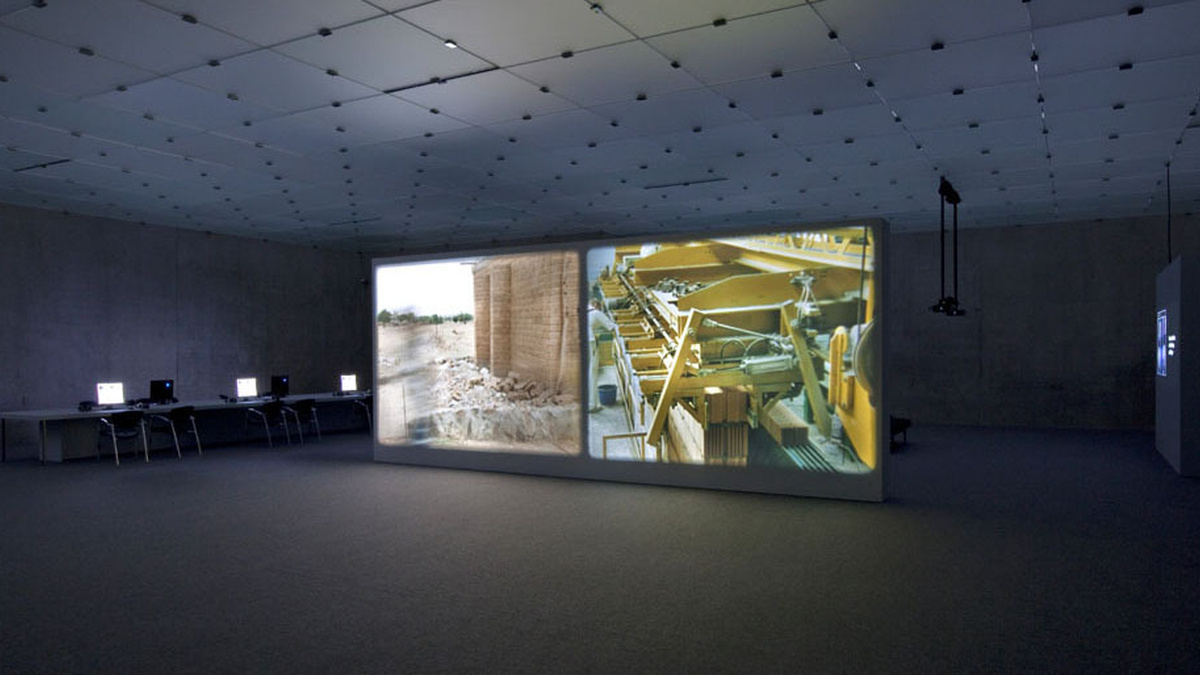Harun Farocki
Comparison Via a Third
Wed 16 February — Thu 3 March 2011

Harun Farocki
Comparison Via a Third, 2007, calls for a careful examination, a visual and cognitive scanning, of the aesthetically striking images of three geographically distinct production sites. It shows a double video projection of brickyards and fired blocks being used to construct buildings in Africa, India, and Europe. Shot in the objective manner of a film documentary, the work gets by without spoken commentary, its impact deriving solely from the suggestive atmosphere of what is being presented. However, by merely showing the seemingly archaic production conditions prevalent in Indian high-rises, the film makes the viewer aware of parallels between different stages of industrialization within a society and in this way underscores the dubiousness of the traditional notion of progress.
We see a correlation between the village women working to song, beating the ground in time and singing and the lone male factory worker making utilitarian thuds as he pats a wall with his mallet. The footage is edited by Farocki to produce a mirror-song.
As Matthia Michalka points out “ Comparison via a third is about the concept of work, as reflected through the manufacturing and processing of bricks. Harun Farocki shows working procedures in traditional, newly industrializing, and highly industrialized societies. The film jumps back and forth between, or projects side-by-side, footage from Burkina Faso, India, France and Germany. After an initial presentatin of increasingly automated manufacturing processes, the work develops by showing various locations and societies, related to one another in a series of different constellations”
Bricks are the resonating fundamentals of society. Bricks are layers of clay that sound, like records just simply too thick. Like records they appear in series, but every brick is slightly different – not just another brick in the wall. Bricks create spaces, organize social relations and store knowledge on social structures. They resonate in a way that tells us if they are good enough or not. Bricks form the fundamental sound of our societies, but we haven't learned to listen to them. Through different traditions of brick production Farocki's film has our eyes and ears consider them in comparison – and not in competition, not as clash of cultures. Farocki shows us various brick production sites in their colours, movements and sounds. Brick burning, brick carrying, brick laying, bricks on bricks, no off-commentary. 20 inter-titles in 60 minutes tell us something about the temporality of working processes. The film shows us that certain production modes require their own duration and that cultures differentiate around the time of the brick. (Ute Holl)